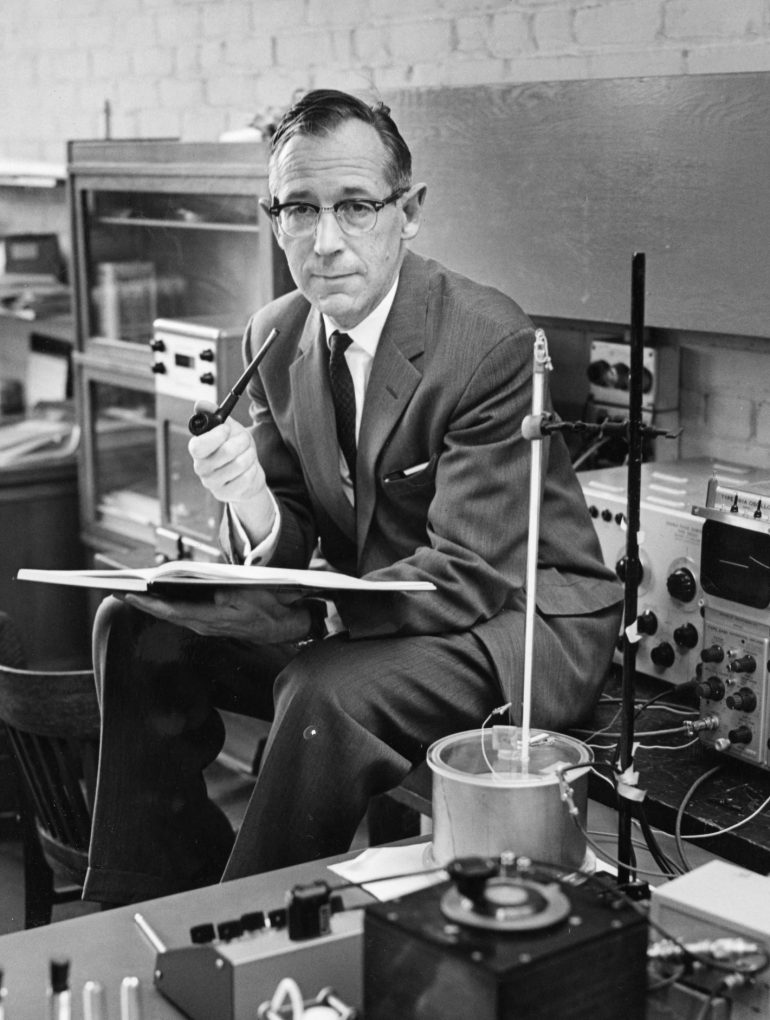Biomedical engineering first emerged as an independent discipline during or shortly after the Second World War. In Canada, the beginning can be traced to the founding of the Defense Research Medical Laboratories in 1950. The primary objective of the centre was to investigate certain aspects of the interaction between humans and machines, particularly under stress. The field soon broadened from instrumentation and measurement to active support in medical research and clinical practice, and the role of the biomedical engineer changed from that of designer to collaborator.
In 1950, Dr. W.G. Bigelow and Dr. J.C. Callaghan started investigating the use of hypothermia for heart surgery at Toronto General Hospital. They invited engineer Jack A. Hopps, of the National Research Council, to join their research team, and, as a result of their collaboration, the first practical external heart pacemaker was designed and tested, much groundwork was done towards a practical implanted pacemaker, and in addition a method was devised of using radio frequency heating for bringing the subject out of hypothermia.
In the same decade, a group interested in biomedical engineering was being established at the University of Saskatchewan. In October 1958, at a cocktail party given by Dr. Wendell McLeod (Dean of Medicine), Dr. Arthur Porter (Dean of Engineering) was introduced to Dr. William Feindel (Professor of Neurosurgery), and the talk soon turned to possible cooperation between the two Faculties. To make a long story short, Professor Norman Moody was called in to work on the problem of measuring blood flow in the carotid artery. Shortly after, in July 1959, Professor Moody was appointed Chairman of Electrical Engineering at the University of Saskatchewan, and he continued his interest and activity in the field of biomedical electronics.

Dr. Porter was then invited to form the Department of Industrial Engineering at the University of Toronto. He found, when he Institute of arrived in 1961, that here too was a strong interest in biomedical engineering; indeed, Professor Ian Dalton (Electrical Engineering) had already worked with surgeons at the Sick Children’s Hospital on designing and developing a heart-lung machine. With the strong backing of the two Deans (Dean McLaughlin of Applied Science and Engineering, and Dean Hamilton of Medicine), a committee was set up to study the ways and means of establishing a formal group. One very active and enthusiastic member of this Committee was Dr. E. Llewellyn-Thomas, and strong supporters were Professor James M. Ham and Dr. John W. Scott.
The outcome of this Committee was the formation in July 1962 of the Institute of Biomedical Electronics at the University of Toronto, with Professor Norman F. Moody as Director, and, one year later, Dr. E. R. (Tommy) Llewellyn-Thomas as Associate Director.
Dr. E. Llewellyn-Thomas, an engineer and physician, joined the Institute in 1963 and later became Associate Dean of Medicine. In 1972, its tenth year as Institute of Biomedical Electronics, the Institute was again renamed the Institute of Biomedical Engineering.
Originally, the Institute had a council of 16 persons, and the Director reported to the President of the University through this council. The Director still reports to a council, which is made up of Deans of Engineering, Medicine and now Dentistry. Financial and other support comes to the Institute through these three faculties.
From the beginning, it was intended that the graduate students studying at the Institute should be drawn from a number of disciplines; i.e. engineering, the physical sciences, and the life sciences. In order not to divorce these students from their base disciplines, the Collaborative Program was conceived and developed. Students were, and still are, enrolled in their “home” departments, the Institute being a common ground where they would have their desks and laboratories to meet and exchange ideas and experiences with other researchers across the various disciplines. Close cooperation between the Institute and various departments was necessary to achieve this, thus the collaboration began.
From the beginning, it was intended that the graduate students studying at the Institute should be drawn from a number of disciplines; i.e. engineering, the physical sciences, and the life sciences. In order not to divorce these students from their base disciplines, the Collaborative Program was conceived and developed. Students were, and still are, enrolled in their “home” departments, the Institute being a common ground where they would have their desks and laboratories to meet and exchange ideas and experiences with other researchers across the various disciplines. Close cooperation between the Institute and various departments was necessary to achieve this, thus the collaboration began.
Under the chairmanship of Hans Kunov and Richard Frecker, planning for a Clinical Engineering Program was completed in 1975 and approved by the Governing Council of the University but, due to fiscal constraints, the Institute was unable to launch this program until 1984. This was achieved largely through the work of the Director and his colleagues in publicizing the proposal, investigating sources of funding, offering new graduate courses and deleting old ones, all within the recommendations of the report. When the Clinical Engineering Program was finally launched, the Institute became a graduate department for the first time, enabling it to enroll students directly into the Institute. Students fulfilling the requirements of this program receive a Master of Health Sciences in Clinical Biomedical Engineering.
In April 1984, the Director organized the Institute’s first Scientific Day. The keynote address was given by Professor Edward Llewellyn-Thomas, who sadly passed away shortly thereafter. Following his death, the Deans of Engineering and Medicine established the Edward Llewellyn-Thomas Memorial Lecture Series. Today, this lecture is the key event for the IBBME Annual Research Conference (IARC), in which Institute students participate in a day of oral and poster presentations of their current research.
In 1999, the Institute of Biomedical Engineering merged with the Centre for Biomaterials and the tissue engineering group in Chemical Engineering, to create today’s Institute of Biomaterials and Biomedical Engineering, IBBME. In addition to Medicine and Engineering, IBBME is also a part of the Faculty of Dentistry. Many new faculty have been hired and new research directions established giving greater emphasis to the biological sciences.
In the fall of 2001, with the help of funding from the Whitaker Foundation, the Institute launched the new Graduate Program in Biomedical Engineering. This program allows students to register for graduate studies directly in IBBME, without having to register in “home” or collaborative departments. The new program has been a great success. Curriculum and research themes have been streamlined to accommodate the interests of incoming students.


